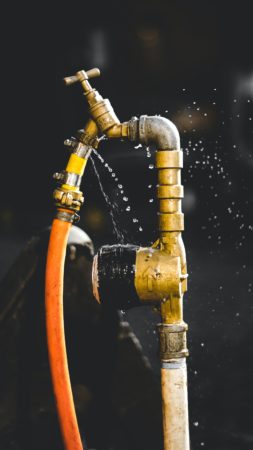11 June 2020
By Bryan Smyth
bryan@TheCork.ie

Photo by Valentin Petkov on Unsplash
When you are thinking about buying a new home, you want all the information possible on the state of the house and any potential problems that might arise. A home inspection is a great way to get information on your future investment.
Plumbing is usually an unseen but essential element of a home. When problems occur, they can go wrong really quickly and do a lot of damage. Here is what you need to look for to spot potential plumbing problems during a home inspection:
Check the Water Pressure
The first way to check for plumbing problems in a home inspection is to turn on the faucets and then flush the toilet and run the dishwasher all at the same time. You want to check that there is adequate water pressure to all areas in the house.
If the water pressure is low in only one area of the house, this can be a sign of a faucet that needs to be replaced. If the water pressure is low all over the house, it could be a sign of a more significant plumbing issue such as a leak in the pipes or a problem with water distribution.
Check the Drains
Since you have all the faucets and taps running, take a look at how they are draining. A slow drain could be a sign of a clog, which is easy to fix, or it could be a sign of a more significant plumbing issue. A Septic Repair in Schomberg can indicate that there are issues with your sewer line, or that tree roots have grown through your pipes.
If removing the clog doesn’t fix the problem, you’ll need to get an experienced Toronto drain snaking service to inspect your drain pipes to look for cracked or collapsed pipes.
Inspect the Entire System
Take a look at all of the elements that make up the plumbing system. Inspect indoor and outdoor plumbing elements. Be sure to inspect if every part is working correctly and without any issues. Check the following:
- Water Heater – be sure the boiler and tank are functioning well.
- Sump Pump – make sure the output is adequate for your needs and that the pump is working properly
- Traps – make sure they are working well
- Shut Off Valve – make sure the shut-off valves are accessible and working correctly.
Use Your Senses
- Listen – Listen for sounds of running water. It could sound like a drop, a hiss or a steady trickle. If the water sound is connected to a running toilet, then there may not be a reason for concern, but if you can’t find the source of the sound, it could be an indication of a burst pipe or leak.
- Look – Look for water spots or signs of mould or mildew that could indicate the location of the leak. Also, take a look at the water bill. If there are unexpected increases in water usage, this could also be a sign of a hidden leak.
- Smell – Do you smell mould or something musty? This off-putting scent could be a sign of water damage or a leaky pipe. Do you smell sewage? Sewer smell could be a sign of a drainage problem or a crack in one of the vents or a dry trap.
Finding plumbing issued before they turn into more significant problems can save you a lot of headaches and money down the road. This risk is the reason it is so important to spot these potential problems in a home inspection before you purchase the property.
